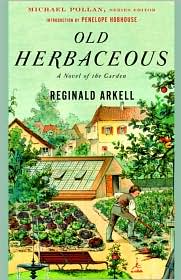
What a wonderfully opaque and inebriated
novella! An alcoholic French couple summers in a French port town and observes another alcoholic British couple, the Captain and his wife. The French couple essentially eavesdrops on the Brits, but since they can't hear everything they make up a history for the Brits, a history that is besotted with poetry and passion and drink.
This novella, filled with shifting perspectives, has postmodernist leanings. Even as we start to think we know who Emily L. is, we eventually doubt it. Surely, it wasn't that Emily, was it? But the line from "A certain slant of light" shows up and an unmistakable description of it is limned. Yet the Brits are from Newport, not Amherst. And they are Brits, not Americans. This can't be that Emily, can it?
Since the novella's main character narrates from inside a resort hotel bar, should we assume that the tale is one exaggerated and distorted by drink? I believe the tale is an excuse to delve into the themes of love and truth and especially writing. Writing is often a favorite topic of postmodernist authors, though I would hesitate to call Duras postmodern though she has written a pomo novella in
Emily L. Though written during the postmodern era, Duras could be more accurately described as following the earlier theories of
nouveau roman, which included author Alain Robbe-Grillet as its main author and theorist.
Emily L. abounds in savory nuggets for writers ...
- "The only real poem is inevitably the one that's lost."
- "When you die, the story will become legendary, flagrant."
- "She said if [the poems] made him suffer it probably meant that he'd begun to understand them."
These are the kinds of lines that fill the Moleskine of any creative writing MFA holder.
The last page of the novella reads likes a manifesto for writing and, though it loses some of its power and eloquence quoted out of context, the final words of its last, sprawling sentence are an apt summation: "... just leave everything as it is when it appears." A bit of the first draft, best draft? Et tu, Marguerite?
One of the things I really enjoy about Duras' style (and this may be a refection of her being involved with the
nouveau roman as mentioned above) is her ability to paint a scene or describe an emotion without the use of verbs, or at least use as few as possible. A classic example of describing an interior state comes out of her masterful novella,
The Lover. After the girl's first sexual experience Duras writes, "The sea, formless, simply beyond compare." Something about not using a verb, and in the context of that transformative act, creates an eternal moment, suspended and cut off from the past and future, hanging in the forever present much like in the moment of intense sexual release.
In
Emily L., she lessens the importance of the verb in all but one sentence to paint an especially vivid scene in the middle of the book: "Dusk. The light of dusk everywhere. The streets, the ships in the harbor. A gold, a pink and gold light that's reflected back from the bright surfaces of the tanker port on the other side of the river." One instance of verb usage, this passage is full of descriptive nouns all connected to "reflected."
And this is Duras' charm, her style. Though story is important in a novella, the form does allow for experimentation and for deep excursions into style. Story is part of why we read novellas, but there is also the need for understanding the inner lives of the characters in the story or even how the surrounding milieu can be considered psychologically and not as just merely props for the scene. And things in our own world take on a certain importance to our own lives, especially when we drink and fantasize and gossip and eavesdrop on our fellow drunks. This can be heightened on vacation -- when everything has a special glow and hidden meaning.
The novella opens with a simple declarative sentence, "It began with the fear." That fear is everything, anything ... love and loss of love, commitment and infidelity, life and death. And all are considered throughout
Emily L. What would a writerly novella be without some consideration of death? What better vacationing barfly understanding of death than what comes from the Captain, "Drink will blur things when the time comes. Drink and dementia."
Not a first choice novella within Duras' work -- that distinction must go to
The Lover -- but
Emily L. shows a writer comfortable with her voice and especially gifted with experimenting within the novella form.











